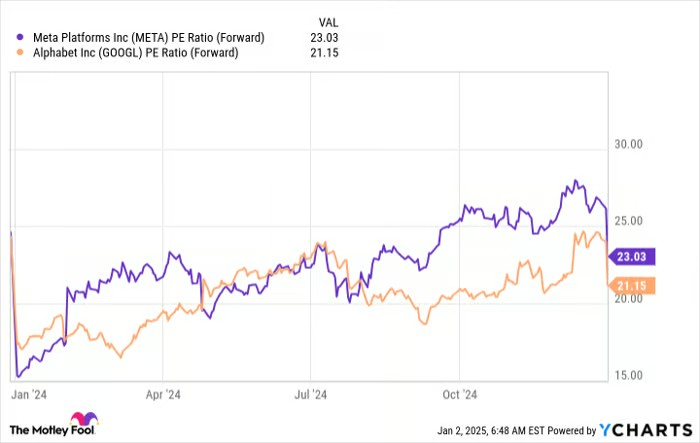When it comes to investing in the stock market, understanding the difference between value stocks and growth stocks is crucial. These two categories represent distinct investment philosophies, each with its own set of risks and rewards. Whether you're a seasoned investor or just starting out, knowing how to identify and balance these types of stocks can help you build a diversified portfolio tailored to your financial goals. In this article, we’ll break down the key differences between value and growth stocks, explore their pros and cons, and provide tips on how to incorporate them into your investment strategies.
What Are Value Stocks?
Value stocks are shares of companies that are considered undervalued relative to their intrinsic worth. These companies often have strong fundamentals, such as stable earnings, low debt, and consistent cash flow, but their stock prices may not reflect their true value due to market inefficiencies or temporary challenges. Value investors seek to buy these stocks at a discount, anticipating that the market will eventually recognize their true worth, leading to price appreciation.
Characteristics of Value Stocks:
- Low price-to-earnings (P/E) ratio.
- High dividend yield.
- Strong balance sheets with low debt.
- Established companies in mature industries.
Examples of value stocks include companies like Johnson & Johnson, Procter & Gamble, and Coca-Cola. These companies are often referred to as "blue-chip" stocks due to their stability and long track record of performance.
What Are Growth Stocks?
Growth stocks, on the other hand, are shares of companies expected to grow at an above-average rate compared to the broader market. These companies typically reinvest their earnings into expansion, research, and development rather than paying dividends. Growth investors are willing to pay a premium for these stocks, betting on their potential for significant capital appreciation in the future.
Characteristics of Growth Stocks:
- High price-to-earnings (P/E) ratio.
- Low or no dividend yield.
- Revenue and earnings growth exceeding industry averages.
- Often found in emerging or technology-driven sectors.
Examples of growth stocks include companies like Tesla, Amazon, and NVIDIA. These companies are often at the forefront of innovation, driving trends in areas like electric vehicles, e-commerce, and artificial intelligence.

Key Differences Between Value and Growth Stocks
While both value and growth stocks can be profitable, they cater to different types of investors and market conditions. Here’s a breakdown of their key differences:
1. Valuation Metrics
Value stocks are typically undervalued based on traditional metrics like P/E ratio, price-to-book (P/B) ratio, and dividend yield. Growth stocks, however, often trade at higher valuations due to their potential for future earnings growth.
2. Risk and Volatility
Value stocks are generally considered less risky because they are often established companies with stable cash flows and lower volatility. Growth stocks, on the other hand, can be more volatile, as their prices are heavily influenced by future expectations and market sentiment.
3. Dividend Policy
Value stocks are more likely to pay dividends, providing investors with a steady income stream. Growth stocks typically reinvest their earnings into the business, offering little to no dividends but the potential for higher capital gains.
4. Market Conditions
Value stocks tend to perform better during economic recoveries or periods of market stability, while growth stocks often outperform during bull markets or periods of low interest rates.
Pros and Cons of Value Stocks
Understanding the advantages and disadvantages of value stocks can help you decide if they’re right for your portfolio.
Pros:
- Lower risk due to stable earnings and strong fundamentals.
- Dividend income provides a steady cash flow.
- Potential for price appreciation as the market recognizes their true value.
Cons:
- Slower growth compared to growth stocks.
- May take time for the market to correct undervaluation.
- Limited upside in highly efficient markets.
Pros and Cons of Growth Stocks
Similarly, weighing the pros and cons of growth stocks can help you determine their role in your investment strategy.
Pros:
- High potential for capital appreciation.
- Exposure to innovative and high-growth industries.
- Opportunity to invest in future market leaders.
Cons:
- Higher risk and volatility.
- No or low dividend income.
- Vulnerable to market downturns and economic slowdowns.
How to Balance Value and Growth Stocks in Your Portfolio
Balancing value stocks and growth stocks is key to building a diversified portfolio that aligns with your risk tolerance and financial goals. Here are some strategies to consider:
1. Assess Your Risk Tolerance
If you’re a conservative investor, you may prefer a higher allocation to value stocks for their stability and dividends. If you’re more risk-tolerant, you might lean toward growth stocks for their potential for high returns.
2. Consider Market Conditions
Market conditions can influence the performance of value and growth stocks. For example, during economic recoveries, value stocks may outperform, while growth stocks may shine during periods of low interest rates and technological innovation.
3. Diversify Across Sectors
Both value and growth stocks can be found across various sectors. Diversifying your portfolio across sectors can help reduce risk and capture opportunities in different market environments.
4. Rebalance Regularly
Over time, the performance of value and growth stocks may cause your portfolio to become unbalanced. Regularly rebalancing ensures that your portfolio stays aligned with your investment goals and risk tolerance.
Final Thoughts
Understanding the difference between value stocks and growth stocks is essential for making informed investment decisions. While value stocks offer stability and income, growth stocks provide the potential for high returns through capital appreciation. By balancing these two types of stocks in your portfolio, you can create a strategy that aligns with your financial goals and risk tolerance.
Whether you're looking for the best stocks to buy or refining your investment strategies, a well-rounded approach that includes both value and growth stocks can help you navigate the complexities of the stock market and achieve long-term success.
